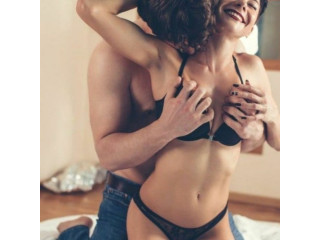The evolution of war photography
Dec 18th, 2022 at 14:32 Services New Delhi 162 views Reference: 4151Location: New Delhi
Price: ₹100
In an age when technology limited most war photographer to static plant acts and mellow, if not severe, countenances, Canadian army shooter William Rider- Rider elevated the art to a advanced position under the most trying of circumstances.
Fortified with a big 4 × 5 box camera, the assistant from London, England, captured striking images of Canadian dogfaces in the fosses and among the remains of First World War Europe. The locales, the faces and the circumstances humanize the history behind the photos, bringing it to life as many did.
A press shooter who joined the Daily Mirror in 1910, Rider- Rider took the arsonist passed to him by Crimean war photographer Richard Fenton and theU.S. Civil War’s Mathew Brady before him, and carried it forward to a new generation that would crop during the Spanish Civil War and the Second World War.
His most recognizable image remains a public icon further than a century after it was taken Canadian ace Billy Bishop, a bent grin on his face, casting anover-the-shoulder regard from the cockpit of his Nieuport 17.
At the time the snap was made, in August 1917, Bishop was formerly a Victoria Cross philanthropist with 37 kills to his credit. His hair swept back as if permanently blown by propwash, the fighter jock appears tired but determined, nearly anxious to get on with the grim task of killing German pamphlets.
There are others among Rider- Rider’s priceless library Canadian dogfaces entering the remains of Cambrai in the final weeks of the war, casually making their way along a littered road as if out for a Sunday perambulation, putatively unconscious to the camera; a tableau of stoic German captures, some swathed, in September 1918 staying to be reused; colors carrying wounded through the slush at Passchendaele in 1917.
“ Passchendaele was a unfaithful place for a cameraman — or anybody differently, for that matter, ” Rider- Rider wrote in a magazine of the day called Canada in Khaki.
“ Always one had to pick one’s way through deep shell holes filled with murky slime; no fosses good of the name and only short tracks of duck boards which were continually under shell fire. ”
In a piece which contained not one of his photos, he described Canadian colors “ being ” in shell craters, bailed as dry as possible by their own hands, and delivering his warder from knee-deep slush as they tried to make their way forward, exposed, through mist and shell fire.
A plethora of news- picture magazines surfaced between the wars — Life in 1936, Look in 1937, Picture Post in 1938, and numerous further. The kidney was monstrously popular long before TV, the Internet and handheld bias gave the millions fingertip access to real- time images, videotape and stories from around world.
The most successful of them was the daily Life, its staff a who’s who of groundbreaking cameramen and women, including the fabulous Robert Capa,W. Eugene Smith — the “ father of the print essay ” — and Margaret Bourke- White, who shot the magazine’s first cover, a massive levee design in Fort Peck, Montana.
This period of photography was backed by advances in press printing technology, paper quality and photographic outfit — videlicet, the compact 35- millimetre camera, some with exchangeable lenses, and accompanying film.
Hand- sized cameras by Leica, Argus and others allowed shutterbugs to work nearly unnoticed and unencumbered by big outfit. The technology revolutionized photography, opening vast new fields in road and news filmland, particularly.
French shooter Henri Cartier- Bresson advanced his gospel of landing “ the decisive moment ” in the early 1930s using 35- millimetre film in the thoroughfares and salons of Paris. He'd go on to come one of the Second World War’s most famed shutterbugs, his filmland packed with emotion.
Capa first took his Leicas to Spain, from which the veracity of his snap of a falling dogface, entitled Loyalist Militiaman at the Moment of Death — taken long before Photoshop’s unbounded digital manipulations caused a veritable assiduity extremity — is argued to this day.
It was Capa who said, “ if your filmland are n’t good enough, you ’re not close enough. ” The cameras, lenses, film and access gave shutterbugs of the day unknown photos of dogfaces in battle and civilians in fermentation, a special gift of Cartier- Bresson.
Bourke- White proved women working in manufactories on the home front,U.S. dogfaces in combat, and wasted death camp captures upon their emancipation.
Her snap of the fate of the bombing of Leipzig — a withered hand reaching from the debris alongside a typewriter, the name “ Triumph ” blessed across its paper table is among the most poignant images of a war brimming with indelible photos.
Contect US :
Email : [email protected]
Website : https://www.andonilubaki.com




